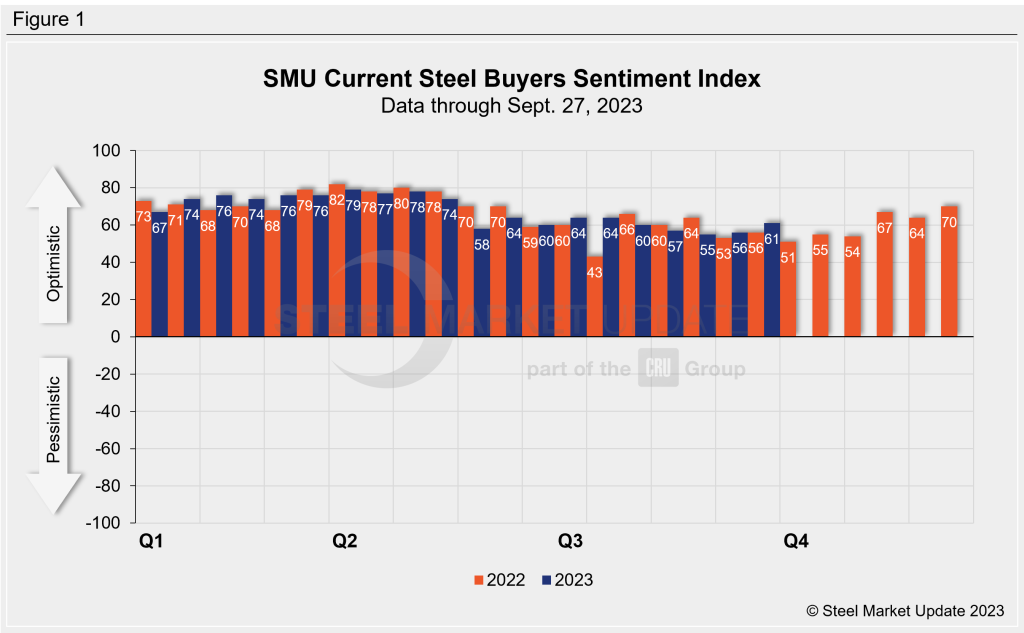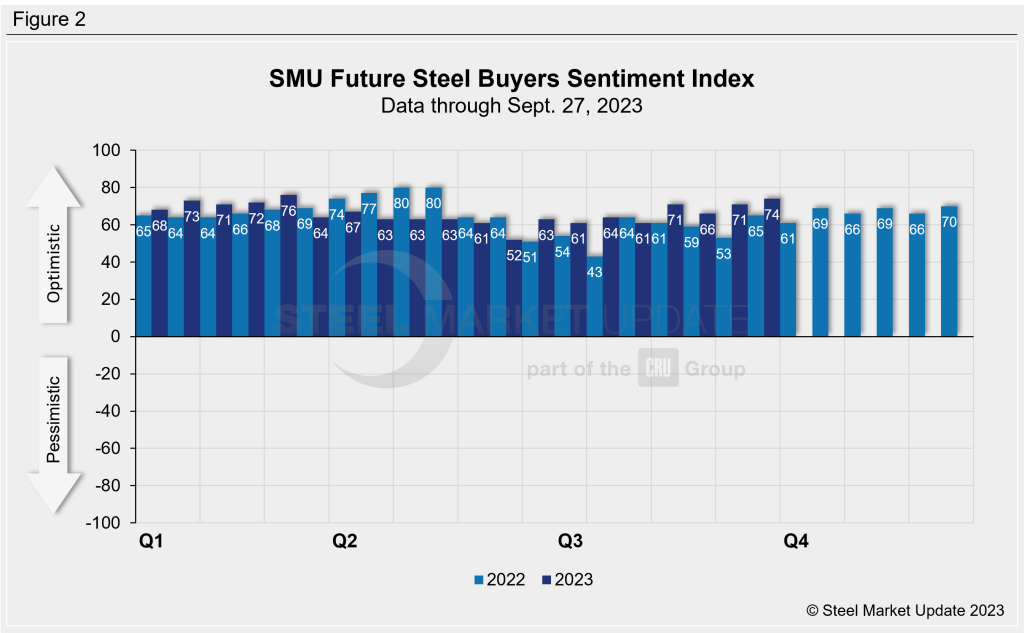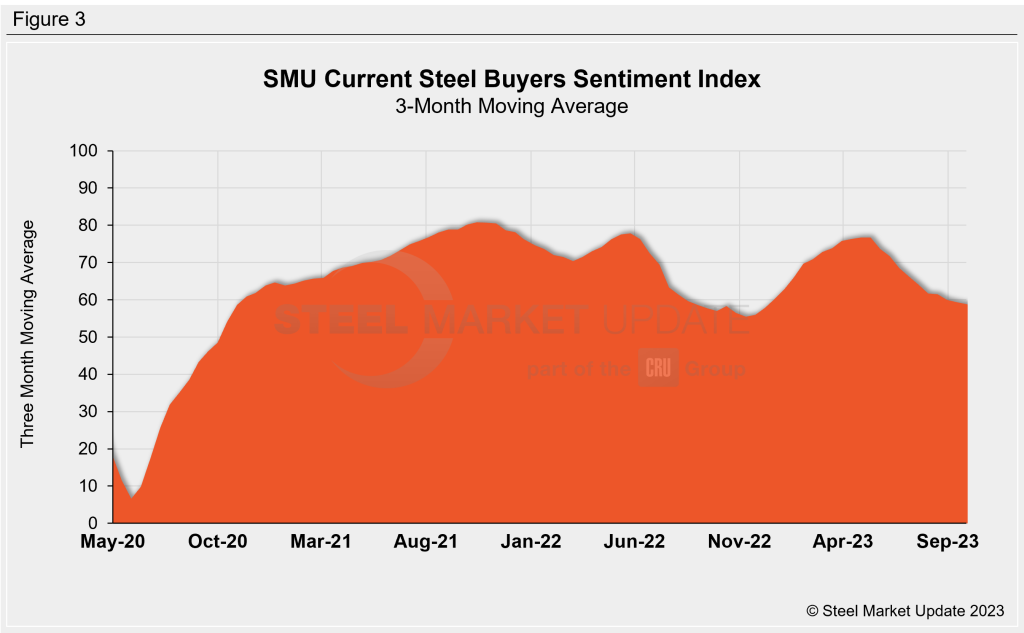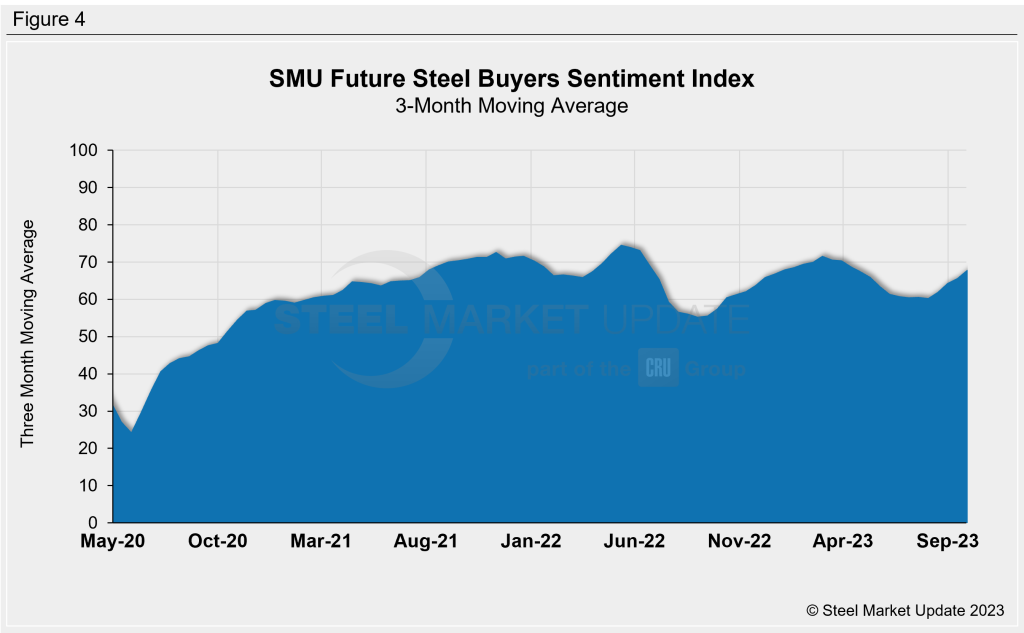Market Data
September 29, 2023
UAW Strike Hasn't Dampened SMU Buyers Sentiment Indices
Written by Ethan Bernard
SMU’s Current and Future Steel Buyers Sentiment Indices both increased this week despite the United Auto Workers (UAW) union strike expansion, based on our most recent survey data.
Every other week we poll steel buyers about sentiment. The Steel Buyers Sentiment Indices measure how steel buyers feel about their company’s chances of success in the current market, as well as three to six months down the road. We have historical data going back to 2008. Check our interactive graphing tool here.

SMU’s Current Buyers Sentiment Index stood at +61 this week, up five points from two weeks prior (Figure 1). Although the UAW strike has been expanding, and shows no sign of ending soon, this hasn’t impacted steel buyers’ bullishness on current market conditions.
SMU’s Future Buyers Sentiment Index measures buyers’ feelings about business conditions three to six months in the future. This week, the index increased to +74 from +71 at the previous market check (Figure 2). This is the highest reading recorded since early March.

Measured as a three-month moving average, the Current Sentiment 3MMA dipped to +58.83 vs. +59.33 two weeks earlier. (Figure 3).

This week’s Future Sentiment 3MMA increased to +67.83 from +65.67 two weeks prior (Figure 4).

What SMU Respondents Had to Say:
“Current market pricing is below cost.”
“We will (be successful in today’s market), but we love low HRC pricing, so that probably isn’t a fair answer.”
“Will move to ‘Good’ once auto strike is over.”
“We hope to continue with the demand for the projects promoted by the federal government in Mexico.”
“We expect a higher more sustainable sales price in 2024.”
About the SMU Steel Buyers Sentiment Index
The SMU Steel Buyers Sentiment Index measures the attitude of buyers and sellers of flat-rolled steel products in North America. It is a proprietary product developed by Steel Market Update for the North American steel industry. Tracking steel buyers’ sentiment is helpful in predicting their future behavior.
Positive readings run from +10 to +100. A positive reading means the meter on the right-hand side of our home page will fall in the green area indicating optimistic sentiment. Negative readings run from -10 to -100. They result in the meter on our homepage trending into the red, indicating pessimistic sentiment. A reading of “0” (+/- 10) indicates a neutral sentiment (or slightly optimistic or pessimistic), which is most likely an indicator of a shift occurring in the marketplace. Sentiment is measured via SMU surveys twice per month.







